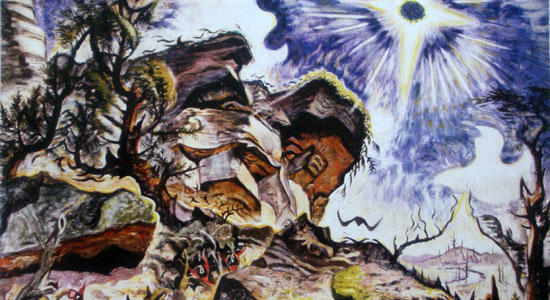 It’s no real surprise that the Chapin Sisters—Abigail and Lily—ended up playing music professionally. They come from a impressive family of musicians, including their father (Grammy-winning singer/songwriter Tom Chapin), uncle (late singer/songwriter Harry “Cat’s In The Cradle” Chapin) and grandfather (late jazz drummer Jim Chapin). In 2008, Abigail and Lily, along with half-sister Jessica Craven (daughter of horror director Wes Craven), released their debut, Lake Bottom LP, which came on the heels of the success the trio garnered with their cover of Britney Spears’ “Toxic.” Late last year, Craven left the band to care for her newborn daughter, so Abigail and Lily continued on as a duo, touring this summer as members of She & Him and, more importantly, recording their second Chapin Sisters album. Two (Lake Bottom) was cut at a family farm in New Jersey by Abigail and Lily with co-producers Jesse Lee (Gang Gang Dance) and Louie Stephens (Rooney), and it adds layers of electric guitars, keyboards, percussion and more to the duo’s patented acoustic, vocal-harmony-driven sound. The duo is currently in the middle of a U.S. tour supporting Two. The Chapin Sisters will also be guest editing magnetmagazine.com all week. Read our Q&A with them.
It’s no real surprise that the Chapin Sisters—Abigail and Lily—ended up playing music professionally. They come from a impressive family of musicians, including their father (Grammy-winning singer/songwriter Tom Chapin), uncle (late singer/songwriter Harry “Cat’s In The Cradle” Chapin) and grandfather (late jazz drummer Jim Chapin). In 2008, Abigail and Lily, along with half-sister Jessica Craven (daughter of horror director Wes Craven), released their debut, Lake Bottom LP, which came on the heels of the success the trio garnered with their cover of Britney Spears’ “Toxic.” Late last year, Craven left the band to care for her newborn daughter, so Abigail and Lily continued on as a duo, touring this summer as members of She & Him and, more importantly, recording their second Chapin Sisters album. Two (Lake Bottom) was cut at a family farm in New Jersey by Abigail and Lily with co-producers Jesse Lee (Gang Gang Dance) and Louie Stephens (Rooney), and it adds layers of electric guitars, keyboards, percussion and more to the duo’s patented acoustic, vocal-harmony-driven sound. The duo is currently in the middle of a U.S. tour supporting Two. The Chapin Sisters will also be guest editing magnetmagazine.com all week. Read our Q&A with them.

Lily: I went to see the Charles Burchfield exhibit at the Hammer Museum in L.A. this spring, and I went back a second time and also bought the book that went along with the exhibition. His early work is gestural and experimental, a young artist navigating the world on paper. His mid-career work is more mature: realistic portrayals of factories and buildings commissioned by magazines, floral wallpaper patterns that he designed at his day job—incredibly beautiful. His final phase, as I understand it, began in his old age, and it is during this time that he began to paint the fantasies of his youth with an experienced eye, resulting in the strangest, wildest depictions of nature, in which sound and smell, seasons and movement, are all depicted in physical form, yet somehow beautifully rendered, with a very subtle eye for color. Watercolor was his favorite medium, so in the most effective of his works the translucence helps transport the viewer into the canvas, to the woods, where he must have stood for hours, reimagining his childhood. Houses and trees become animate objects, while the wind becomes a character, clouds in the sky menacing birds, the sound of cicadas a vibrating pulse depicted by odd radiating lines off the grass.
Video after the jump.
http://www.youtube.com/watch?v=E3j17cE7kH0






